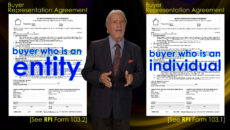The Federal Reserve (the Fed) recently released transcripts from its 2006 Federal Open Market Committee (FOMC) meetings about the housing market.
They aren’t pretty.
Before the Great Recession hit in 2007, the nation’s top economic minds brushed off the possibility that the declining housing market and ensuing recession would have any serious effect on the broader financial system.
In December 2006, then Federal Reserve Bank of New York president (and current Treasury Secretary) Timothy Geithner told his colleagues he was confident in future expansion. Other committee members agreed the housing market was such a small sector that any decline would self correct. Some believed a housing downturn might actually strengthen the economy by reallocating wealth to other investment opportunities. Small businesses quickly come to mind as having been crowded out and in need of investment capital and loans for decades.
The sole voice of reason in these meetings was Ben Bernanke, the Fed’s current chairman, who consistently warned of the failing housing market’s broader economic implications. Overall, the FOMC did not seem to realize the housing market with its base of massive mortgage financing ($6 trillion) was such a dominant piece of the puzzle.
first tuesday take: Caught up in a herd, and hubris. It happens to very smart and important people all the time. They forget to look at who is headed — thinking — in a diametrically opposed direction. Plenty were, but were willfully ignored as outcasts; very smart outcasts.
The FOMC “yes men” lost focus of economic fundamentals. After 40 years of relentlessly pushing homeownership, the overbuilding and excessive leveraging of the 2000s should have warned that gathering of the nation’s greatest economic minds of an impending crisis. But no cigar.
At the height of the Millennium Boom in 2004, the Fed began to raise short-term interest rates to tame inflation and calm an overheated job market, a proper step to bring about the needed recession to cool the economy. The yield spread — the difference between the ten-year Treasury note rate (long-term rate) and the three-year Treasury bill rate (short-term rate) — began to decline as short term rates were steadily increased by the Fed.
The yield curve inverted in mid-2006 as short-term rates exceeded long-term rates (three-month rates versus ten-year rate). In December of 2007, a year after it inverted, an official recession was declared. All on target as planned by the Fed. [For more information about the yield curve, see the January 2012 first tuesday Market Chart, Using the yield spread to forecast recessions and recoveries and the June 2011 first tuesday article, Suspect behavior: why and how the Fed creates a recession.]
The current yield spread suggests the 2012 economy will remain in recovery without a return to recession – during the year 2012. The yield spread figure remained high during the last quarter of 2011, rising from a two-year decline which ended in September 2011 with a low of 1.97.
Studying the yield curve is a basic economic principal employed by professionals in all fields to anticipate U.S. economic health for the coming year.
Recessions are not random. They don’t strike unpredictably, but instead follow the pattern of jobs and inflation. Real estate professionals who pay attention to the yield curve, or its companion yield spread, can confidently predict when employment rates and housing prices will return to prior levels, and the hopeful then continue to expand as the population grows. [For more information regarding the history of the housing market, see the October 2010 first tuesday article, Is homeownership a luxury or a necessity?]
The foible of the FOMC serves as a strong reminder to rely on information far distant from the media for economic guidance and financial advice. Historical precedent serves as the strongest litmus test against even the most trusted, most senior authority’s predictions.
Re: “Inside the Fed in 2006: A Coming Crisis, and Banter” from the NY Times
“Postmodern Business Cycles” from the NY Times















What a bunch of liars…….The Fed’s planned this all along. I agree with Larry
Liers
“… strong reminder to rely on information far distant from the media for economic guidance and financial advice. Historical precedent serves as the strongest litmus test against even the most trusted, most senior authority’s predictions.
BEST PART OF THE ARTICLE…
REALLY??????????????REALLLLLLLLLLLLY in my most sacastic post.
THOSE SAME FED PLAYERS….raised rates and crashed the RE market. similar to raising gasoline prices to $15 dollars a gallon……for no reason……awe nothing will happen…Fed was caught SKIM mIng more money on the yeilds….Thanks Fed Res….great job…
I pity the agents who trust the fed or believe this nonsence post…….
I am glad I retired out of this circus/////amen